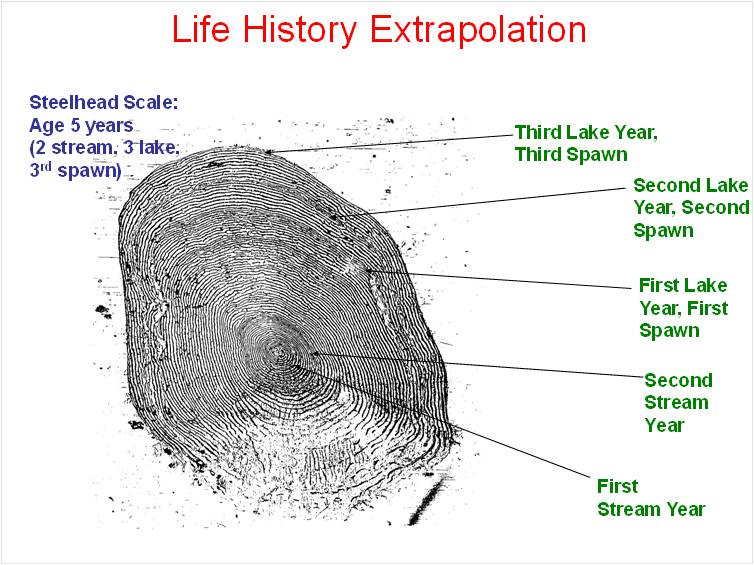How the Study was Carried Out
Four anglers from the North Shore Steelhead Association (NSSA), Randy Beamish, Terry Kosolowski, Wes Bender and Keith Ailey, conducted the data collection through angling from 2008 to 2013. These project volunteers were trained in biological sampling, fin clipping/clip recognition and fish tagging.
The study design and clipping schedule was established by an Ontario Ministry of Natural Resources fisheries specialist. Each day, over a six-week period (mid-April to the end of May), the four anglers caught adult steelhead (during their spawning migration) using normal angling practices. Each live-captured fish was biologically sampled (fork length, sex, scale specimen taken) and received the yearly fin clip. A numbered, colour-coded, plastic ‘Floy' disc tag was sutured to the anterior end of the dorsal fin.
On completion of the biological sampling process, all steelhead were released at the location of capture.
Peterson Estimate calculation & Fin Clip Protocol
Population size is calculated using a ‘Petersen (mark/recapture) Population Estimate.' Steelhead are fin clipped in one year and based on the proportion of those clipped fish captured the following year, a population size can be estimated. Read more detailed information on the is process.
The population estimates from 1999 to 2004 were calculated using an electronic counting fence located on the fish ladder at Lakehead University.
The tags applied to a portion of the captured steelhead were used to determine annular growth rates, validate ages, document movement patterns and assess stray rates.

